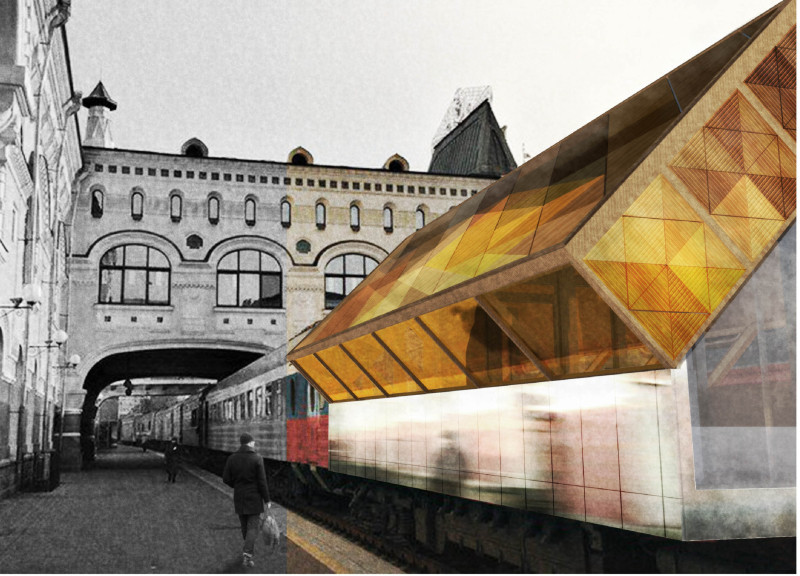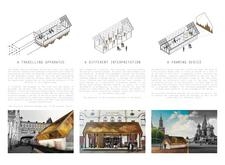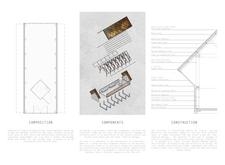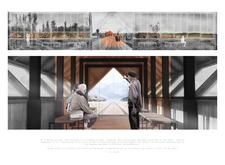5 key facts about this project
## Project Overview
"Through the Trans-Siberian Railway" is conceived as a multi-functional structure that acknowledges the historical, cultural, and technological significance of the Trans-Siberian Railway. Located along the railway route, the design combines elements of a traveling apparatus, an interactive exhibition space, and a visual framing device that encapsulates the essence of the railway journey.
## Material Selection and Structural Design
The project employs an array of thoughtfully chosen materials that support both structural integrity and aesthetic value. Local timber forms the basis for the roof and interior surfaces, while metal grids enhance the overall stability of the design. Copper elements, including gutters and framing, add durability, while bronze-tinted double glazing allows natural light to illuminate the interior spaces. Reflective aluminum panels wrap the exterior, engaging with the environment and creating a dynamic visual interaction with the surrounding landscapes. A robust structural frame is designed to accommodate flexible spaces for diverse functions, supporting both passenger transit and cultural events.
## Spatial Configuration and User Engagement
The layout prioritizes fluidity and movement, facilitating an adaptable structure that can extend upwards at various railway stops, thereby providing dynamic viewpoints for users. This adaptability, achieved through telescopic elements, reinforces the notion that the journey itself holds significance. Additionally, the design incorporates visual framing techniques that redirect visitors' attention to the surrounding landscapes, fostering a connection with local cultural and natural landmarks. This engagement approach is not only crucial for enhancing the user experience but also encourages social interactions among travelers and locals. The project further emphasizes sustainability by integrating locally sourced materials and construction methods that minimize ecological impact while incorporating reflective surfaces to optimize energy conservation.






















































